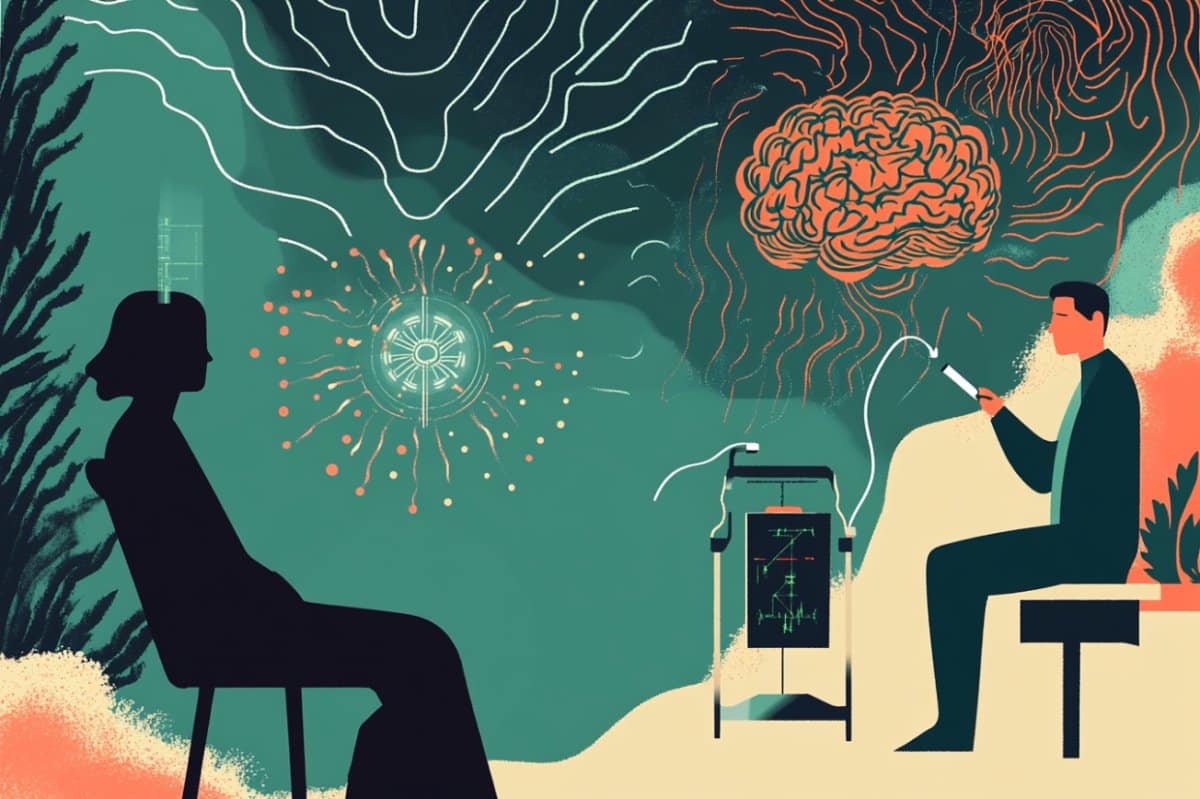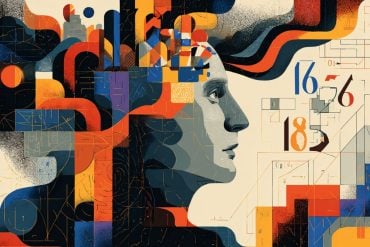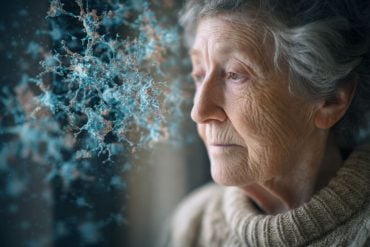Summary: A new meta-analysis suggests that provoking symptoms just before delivering repetitive transcranial magnetic stimulation (rTMS) can improve clinical outcomes for OCD and nicotine dependence. Researchers examined data from multiple studies and found that rTMS was nearly twice as effective when paired with targeted symptom provocation.
For example, patients with OCD were asked to trigger obsessive thoughts, and those with nicotine dependence were exposed to cigarette-related cues before treatment. While not conclusive, these findings highlight a potentially valuable approach to enhancing rTMS efficacy and call for further controlled trials.
Key Facts:
- Boosted Efficacy: rTMS was nearly twice as effective when combined with symptom provocation.
- Targeted Triggers: Provoking obsessions or cravings before rTMS appears to activate relevant brain circuits.
- Need for Trials: Researchers call for randomized studies to confirm effectiveness across disorders.
Source: Vanderbilt University
A new study in JAMA Psychiatry makes the case that symptom provocation may significantly improve the clinical effectiveness of repetitive transcranial magnetic stimulation (rTMS), a noninvasive brain stimulation method used to treat depression, obsessive-compulsive disorder (OCD) and nicotine dependence.
The study was conceptualized, designed and supervised by Heather Burrell Ward, MD, assistant professor of Psychiatry and Behavioral Sciences and director of Neuromodulation Research, in collaboration with Simon Vandekar, PhD, associate professor of Biostatistics and Daniel Bello and Megan Jones, two students in their respective labs.
This is the first large-scale meta-analysis to examine whether deliberately triggering symptoms immediately before administering rTMS enhances treatment outcomes.
“The FDA-approved protocols for OCD and nicotine dependence include a ‘symptom provocation’ immediately before administering rTMS,” Ward said.
“For OCD, this means provoking obsessive thoughts; so, if someone has obsessions about hygiene, you could have them put their hand in a trashcan or touch the bottom of their shoe immediately before receiving rTMS.
“For nicotine dependence, this involves provoking nicotine craving, so you can have someone imaging smoking a cigarette, or even take out one of their own cigarettes, hold it in their hand, and even smell it.
“There is some evidence to suggest that activating a brain circuit immediately before applying rTMS will make the rTMS more effective. However, this evidence has been from small studies and has never been analyzed in large numbers to draw definitive conclusions.
“We therefore performed a systematic review with meta-analysis, a study that combines results from many previous studies, to investigate the effects of symptom provocation on clinical response to rTMS for OCD and nicotine dependence.
“Meta-analyses are important because they summarize results across all studies to provide a more reliable estimate of an effect than any single study alone.”
In the entire analysis, symptom provocation did not significantly improve clinical response — which is often measured by reduction in OCD symptoms or cigarette use.
However, rTMS was nearly twice as effective when symptom provocation was used compared to when it was not used, which suggests that symptom provocation may enhance response to rTMS.
“It was surprising to see that symptom provocation seemed to enhance clinical response for both OCD and nicotine dependence, despite different rTMS protocols, targets and provocation methods,” Ward said.
Ward added that it is also possible that symptom provocation has different effects in different populations.
“For example, some studies suggest that, in contrast to the general population, people with schizophrenia do not crave cigarettes upon being presented with smoking-related images,” she said.
“In that case, perhaps symptom provocation would not be appropriate for rTMS for nicotine dependence in schizophrenia.”
Ward, who is currently principal investigator of a clinical trial comparing rTMS interventions for nicotine use in people with and without schizophrenia, sees these as important questions to address in the future.
“While this meta-analysis is incredibly valuable to the field in suggesting that symptom provocation may enhance clinical response to rTMS, it is critical that prospective, randomized, controlled studies are performed that directly test if symptom provocation improves response to rTMS,” she said.
“These should be conducted for OCD and nicotine dependence as well as other disorders, including other substance use disorders, and other rTMS targets. Perhaps there are some brain circuits that need to be activated immediately prior to modulation and others that do not. Interestingly, when rTMS is used to treat depression, we do not provoke depressive symptoms.
“As a psychiatrist who administers rTMS in clinical and research settings, I want to know exactly what I need to do to make rTMS as effective as possible for my patients. There is so much left for us to learn about ways to optimize rTMS treatment, and Vanderbilt is a leader in that field.”
About this rTMS brain stimulation research news
Author: Craig Boerner
Source: Vanderbilt University
Contact: Craig Boerner – Vanderbilt University
Image: The image is credited to Neuroscience News
Original Research: Closed access.
“Symptom Provocation and Clinical Response to Transcranial Magnetic Stimulation” by Heather Burrell Ward et al. JAMA Psychiatry
Abstract
Symptom Provocation and Clinical Response to Transcranial Magnetic Stimulation
Importance
Transcranial magnetic stimulation (TMS), a form of noninvasive brain stimulation used to treat major depressive disorder, obsessive-compulsive disorder (OCD), and nicotine dependence, has well-established state-dependent effects on brain circuitry. However, a major question for TMS remains: does brain state affect clinical response?
Objective
To quantify the association between symptom provocation and clinical response to TMS for OCD and nicotine dependence, the only Food and Drug Administration–cleared TMS indications with symptom provocation.
Data Sources
PubMed, CINAHL, Embase, PsycInfo until August 30, 2024.
Study Selection
Randomized clinical trials of TMS for OCD or nicotine dependence with a clinical outcome. Of 600 studies identified, 71 met inclusion criteria.
Data Extraction and Synthesis
Data extraction was completed independently by 2 extractors and cross-checked by a third. Standardized mean difference (SMD) and SE were estimated via Hedges g and synthesized data in a 3-level random-effects meta-analysis. Study data were analyzed from August 2023 to March 2025.
Main Outcomes and Measures
Primary outcomes were clinical response measures.
Results
A total of 71 studies met inclusion criteria and included 3246 participants (mean [SD] age; 37.8 [8.0] years; mean [SD] percentage female, 44.1% [17.2%]). Included in the meta-analysis were 63 studies with 2998 participants. For OCD studies, active TMS was associated with better clinical response than sham both with (SMD = −0.51; 95% CI, −0.96 to −0.07; P = 0.04) and without (SMD = −0.29; 95% CI, −0.40 to −0.17; P < .001) symptom provocation.
For nicotine use, active TMS was associated with better clinical response than sham when used with (SMD = −0.56; 95% CI, −1.12 to 0; P = .05) but not without (SMD = −0.35; 95% CI, −0.74 to 0.04; P = .08) symptom provocation. For OCD studies, the estimated expected added effect of provocation was SMD of −0.22 (95% CI, −0.65 to 0.20; P = .22). In nicotine studies, the estimated expected added effect of provocation was SMD of −0.21 (95% CI, −1.00 to 0.58; P = .57).
Conclusions and Relevance
Results of this systematic review and meta-analysis suggest that symptom provocation may enhance clinical response to TMS for OCD and nicotine dependence. Studies comparing TMS with and without provocation are critical to establish the causal effect of provocation.








